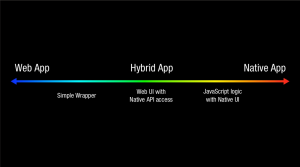1. Phonegap and Cordova
The relation between these two: http://phonegap.com/2012/03/19/phonegap-cordova-and-what%E2%80%99s-in-a-name/ ; Basically, the phonegap is a distribution of Cordova.
The project (JIRA) page of Cordova: https://issues.apache.org/jira/browse/CB#selectedTab=com.atlassian.jira.plugin.system.project
Phone gap gives you more service:
Comprehensive documentation: https://github.com/phonegap/phonegap/wiki
Phong gap build: https://build.phonegap.com/
Phone gap command line build and run: http://docs.phonegap.com/en/2.7.0/guide_command-line_index.md.html#Command-Line%20Usage
Test and debug phone gap apps: http://www.tricedesigns.com/2013/01/18/my-workflow-for-developing-phonegap-applications/; http://css.dzone.com/articles/phonegap-awesome-hybrid-app
IDE(The AppLaud Eclipse plug-in): http://code.google.com/a/eclipselabs.org/p/mobile-web-development-with-phonegap/
Using Weinre and log: https://github.com/phonegap/phonegap/wiki/Debugging-in-PhoneGap
Testing library: Qunit, Jasmine (http://wiki.apache.org/cordova/RunningTests)
Debugging web app on Android: http://developer.android.com/guide/webapps/debugging.html
Java script debugger: http://www.jshybugger.org/
How to use eclipse to debug by jshybugger : https://www.youtube.com/watch?v=P5NSlN8eVyk
PhoneGap plugin: https://github.com/phonegap/phonegap-plugins/tree/master/Android
One of Phonegap feature, hydration: https://build.phonegap.com/docs/hydration
There are many mobile web UI gadget framework works on Phone gap:
(i) jQuery Mobile http://jquerymobile.com/
(ii) Sencha Touch http://www.sencha.com/products/touch/
(iii) GwtMobile(Google Web Toolkit) https://github.com/dennisjzh/GwtMobile
Tips for building phonegap apps: http://stackoverflow.com/questions/5161004/using-phonegap-for-native-application-development
Pros and cons of Phonegap: http://stackoverflow.com/questions/11829551/when-is-it-better-not-to-use-phonegap
2.Titanium
Major change on 1.0:
The CSS and HTML are gone: http://developer.appcelerator.com/question/71/what-happened-to-html–css
the JavaScript Runtime environment of a Titanium Mobile application: http://developer.appcelerator.com/blog/2010/12/titanium-guides-project-js-environment.html
3. Comparison
Comparing Titanium and PhoneGap: http://developer.appcelerator.com/blog/2012/05/comparing-titanium-and-phonegap.html
A thread with detail discussion about both phonegap and titanium:
http://stackoverflow.com/questions/1482586/comparison-between-corona-phonegap-titanium
4. Self-Written
Creating Native UI using javascript and HTML: http://www.codefessions.com/2012/09/creating-native-user-experience-with.html
Pros and Cons and a primer for hybrid apps:
https://www.cocoacontrols.com/posts/a-primer-on-hybrid-apps-for-ios

